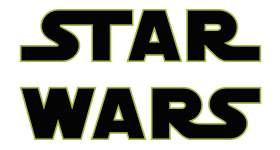While a new image from “The Force Awakens” was supposed to be revealed today by Vanity Fair, it ended up being the one that got uncovered yesterday of Captain Phasma. So to provide those who signed up for the e-mail newsletter and were supposed to get that Captain Phasma image today, Vanity Fair instead has given us a portion of their interview with J.J. Abrams, which features information that wont be in the actual article, as well as new behind the scenes photo of Lupita Nyong’o.
Here is their interview with J.J. Abrams that was sent to their newsletter subscribers:
Bruce Handy: Your movie is taking place 30-something years after Return of the Jedi. Are you going to give it some of that fill-in-blanks quality, in terms of whatever’s happened in the Star Wars galaxy across those decades?
J.J. Abrams: Well, what’s cool is we’ve obviously had a lot of time [during the development process] to talk about what’s happened outside of the borders of the story that you’re seeing. So there are, of course, references to things, and some are very oblique so that hopefully the audience can infer what the characters are referring to. We used to have more references to things that we pulled out because they almost felt like they were trying too hard to allude to something. I think that the key is—and whether we’ve accomplished that or not is, of course, up to the audience—but the key is that references be essential so that you don’t reference a lot of things that feel like, oh, we’re laying pipe for, you know, an animated series or further movies. It should feel like things are being referenced for a reason.
Tell me about what it was like working on the new film both as its writer-director and as a hard-core Star Wars fan going back to your childhood.
Maybe the weirdest moment, which came months after production, was the first time I sat down with John Williams to show him about a half an hour of the movie. I can’t describe the feeling. All I will say is, just to state the facts of it: I am about to show John Williams 30 minutes of a Star Wars movie that he has not seen [and] that I directed. That’s probably as surreal as it gets in my professional life experience.
The first three Star Wars movies had a certain knowingness, because of the way the characters are, so archetypal, and the way they reference a lot of film history, like Luke gazing out at the two setting suns the way someone would in a John Ford Western. That was such a part of the whole “movie brat” thing in the 70s, that George Lucas was a part of. Did you fool around with any of those kinds of nods at movie history?
There are a few specific references that are kind of my own little stupid, secret ones. But what I realized early on was it was all about point of view—meaning it’s not like you just objectively throw in a star field or a spaceship or a desert planet or whatever the thing. The question is, who is that person in that experience? Why does it matter to them? What are they desperate for or afraid of? For me, you could reference all the stuff you want, but the experience of the audience in this is that they’ve got to be sitting with someone who happens to be on-screen going through these experiences. And then that’s not just a desert planet; it could be the most desperate place in the world. Or that’s not just a spaceship flying by; it could be the greatest, most heroic moment of your life. That, to me, has been the constant struggle: to make sure that none of these things are treated like either they’re a museum piece and we’re trying to honor them or they’re gratuitous and thrown in because, well, it’s a Star Wars movie so you’ve got to put these things in. Everything has got to be essential to the characters in the film.
The full interview will be posted tomorrow at Vanity Fair, so we’ll be sure to bring you all the details when it goes live.




